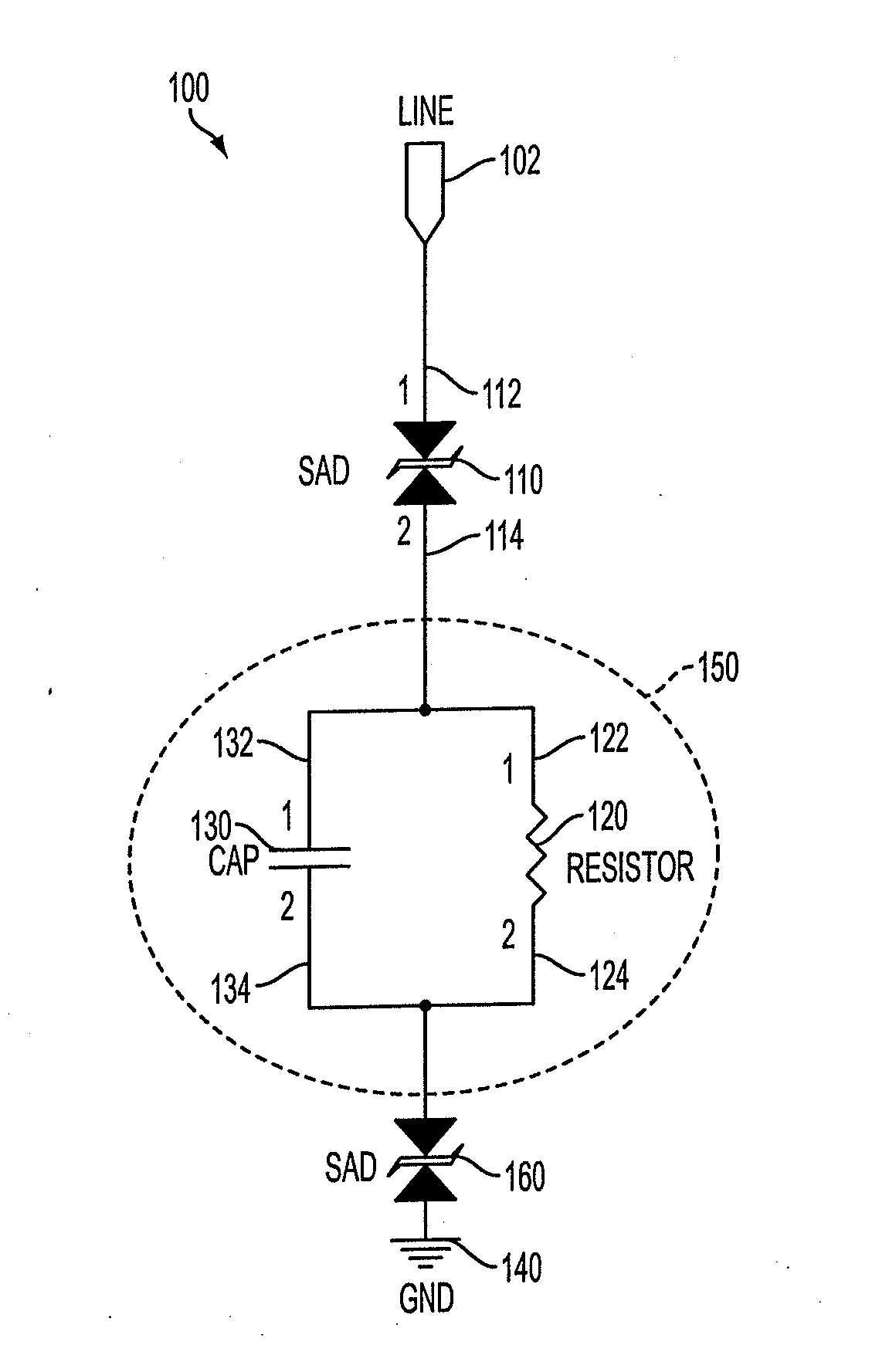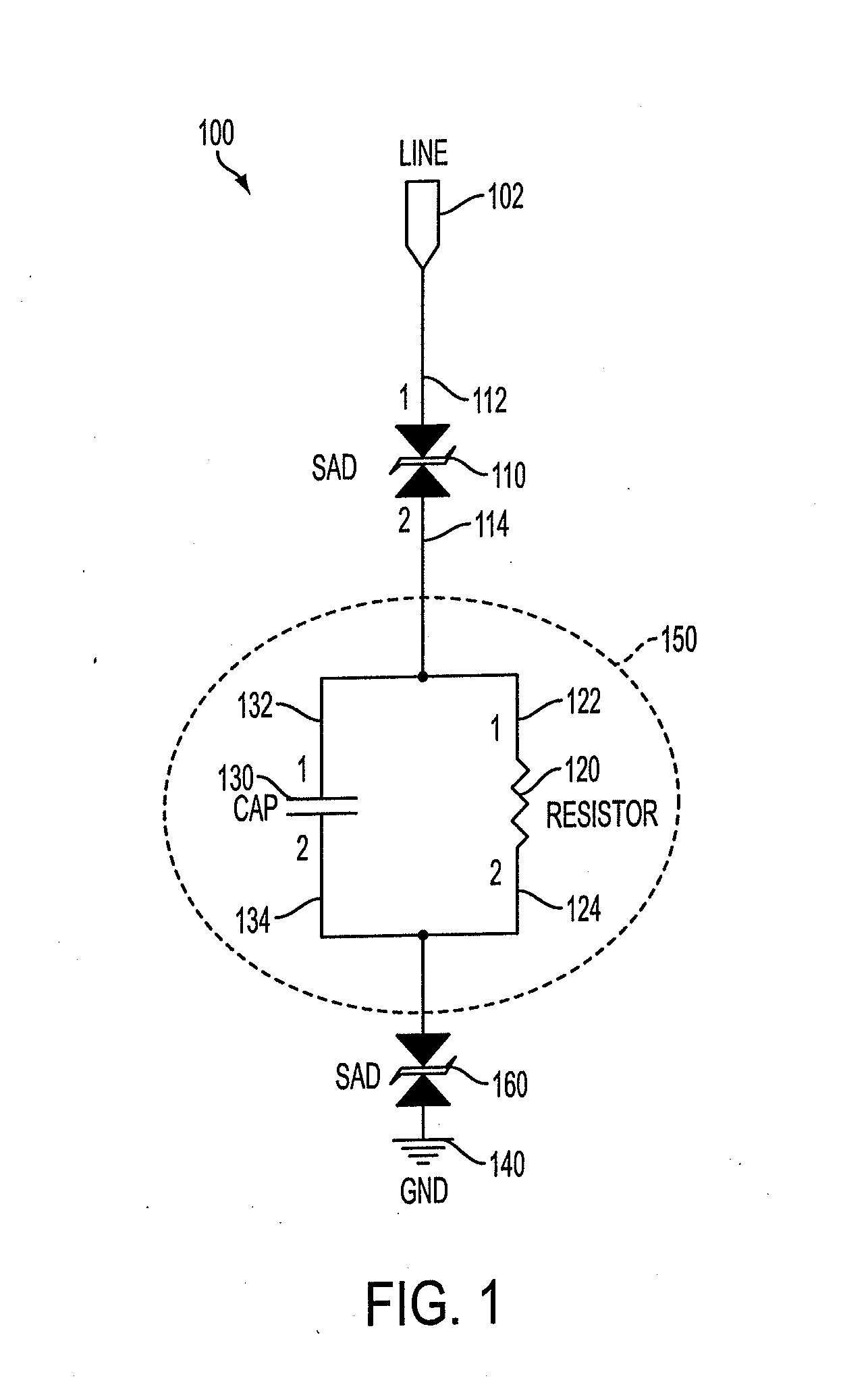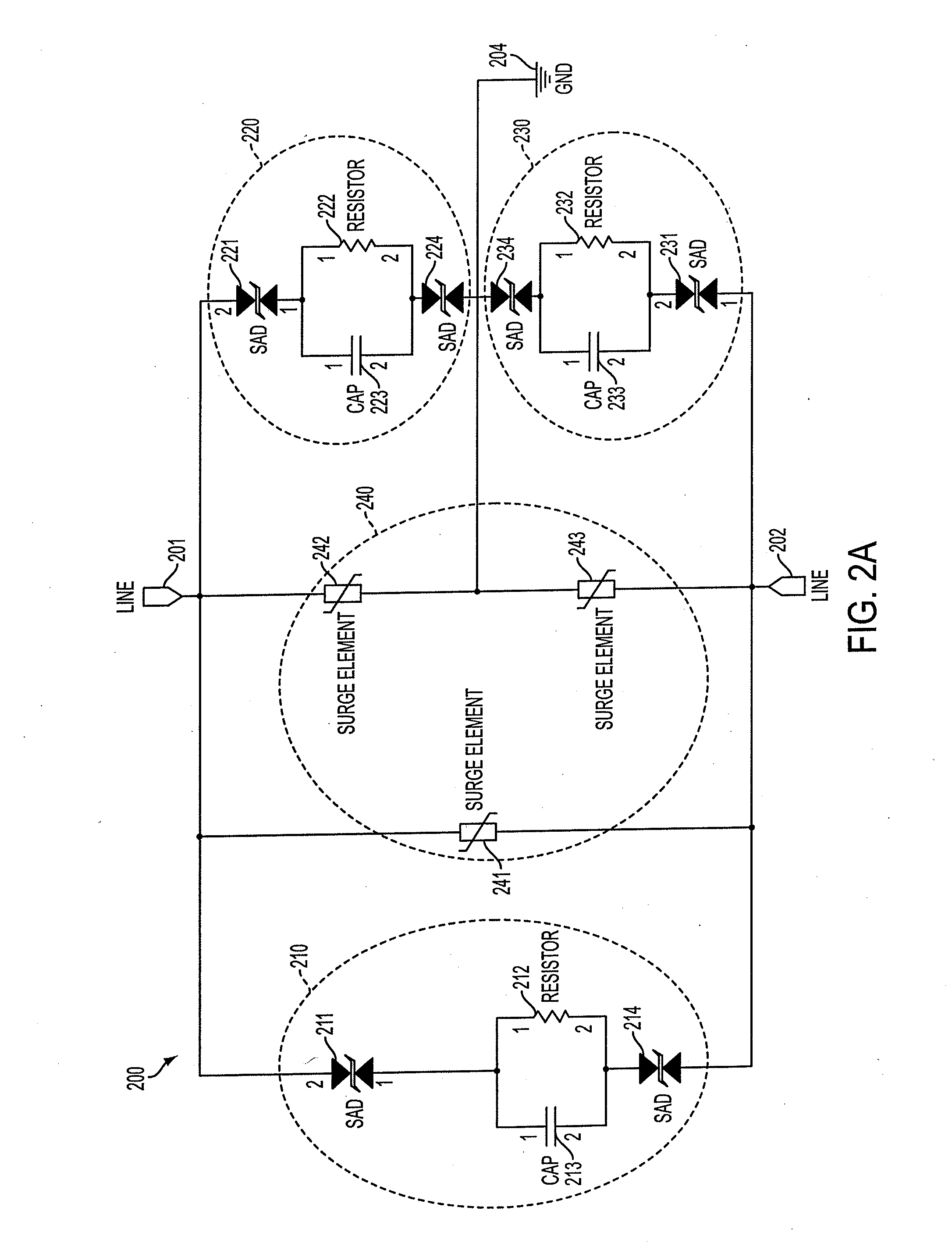Reduced let through voltage transient protection or suppression circuit
a technology of transient protection or suppression circuit and let through voltage, which is applied in the direction of overvoltage protection resistor, emergency protection arrangement for limiting excess voltage/current, and arrangement responsive to excess voltage, etc., can solve the problems of affecting electronic devices, changing the operating frequency range of connected equipment, and severely damage or destroy electronic devices, etc., to reduce the let through voltage, reduce the clamping voltage, and improve the effect of filtering
- Summary
- Abstract
- Description
- Claims
- Application Information
AI Technical Summary
Benefits of technology
Problems solved by technology
Method used
Image
Examples
Embodiment Construction
[0021]Referring to FIG. 1, a schematic circuit diagram of an advanced transient avalanche charger (ATAC) filter 100 is shown. The ATAC filter 100 operates to reduce the let through voltage when encountering a surge condition, especially when compared to traditional or conventional surge suppression or protection techniques connected in parallel. The ATAC filter 100 is a time domain notch filter and includes a silicon avalanche diode (SAD) 110, and a Resistor-Capacitor (RC) circuit 160. The SAD 110 has a first terminal 112 and a second terminal 114. The RC circuit 160 includes a resistor 120 and a capacitor 130. The resistor 120 has a first terminal 122 and a second terminal 124. The capacitor 130 also has a first terminal 132 and a second terminal 134. In FIG. 1, the RC circuit 160 is a parallel RC circuit, having the resistor 120 and the capacitor 130 connected in parallel.
[0022]The ATAC filter 100 is formed by a series combination of the SAD 110 with the RC circuit 150, as shown. ...
PUM
 Login to View More
Login to View More Abstract
Description
Claims
Application Information
 Login to View More
Login to View More - R&D
- Intellectual Property
- Life Sciences
- Materials
- Tech Scout
- Unparalleled Data Quality
- Higher Quality Content
- 60% Fewer Hallucinations
Browse by: Latest US Patents, China's latest patents, Technical Efficacy Thesaurus, Application Domain, Technology Topic, Popular Technical Reports.
© 2025 PatSnap. All rights reserved.Legal|Privacy policy|Modern Slavery Act Transparency Statement|Sitemap|About US| Contact US: help@patsnap.com



